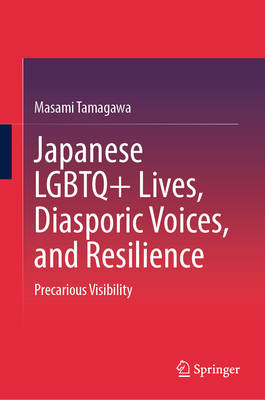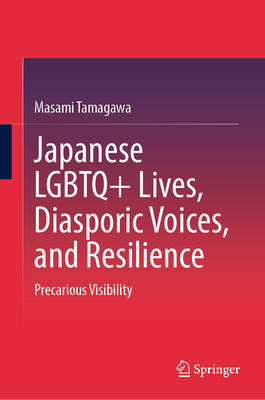
- Afhalen na 1 uur in een winkel met voorraad
- Gratis thuislevering in België vanaf € 30
- Ruim aanbod met 7 miljoen producten
- Afhalen na 1 uur in een winkel met voorraad
- Gratis thuislevering in België vanaf € 30
- Ruim aanbod met 7 miljoen producten
Zoeken
Japanese LGBTQ+ Lives, Diasporic Voices, and Resilience
Precarious Visibility
Masami Tamagawa
Hardcover | Engels
€ 152,95
+ 305 punten
Omschrijving
This book offers a comprehensive exploration of the lived experiences of LGBTQ+ individuals in Japan, framed through the central concept of precarious visibility. While the COVID-19 pandemic serves as a pivotal case study, the scope of this work extends beyond that moment to examine how legal precarity, entrenched cultural expectations, and pervasive social stigma shape queer lives in Japan and abroad. Drawing on rich first-person narratives and qualitative analysis, the book illuminates the challenges and resilience of this diverse community.Key themes include healthcare access, mental health, family and workplace dynamics, migration and travel restrictions, and the contested politics of media representation and activism. By centering voices often overlooked even within LGBTQ+ research, the book highlights both the vulnerabilities and adaptive strategies of queer individuals navigating social marginalization. Distinctive in its integration of domestic and diasporic perspectives, the book is relevant to students an scholars in LGBTQ+ studies, Japanese studies, and global queer scholarship. It demonstrates how moments of crisis, such as the pandemic, expose deeper structural inequalities while also prompting new forms of solidarity and resistance.
Specificaties
Betrokkenen
- Auteur(s):
- Uitgeverij:
Inhoud
- Aantal bladzijden:
- 204
- Taal:
- Engels
Eigenschappen
- Productcode (EAN):
- 9789819531042
- Verschijningsdatum:
- 30/10/2025
- Uitvoering:
- Hardcover
- Formaat:
- Genaaid
- Afmetingen:
- 155 mm x 235 mm

Alleen bij Standaard Boekhandel
+ 305 punten op je klantenkaart van Standaard Boekhandel
Beoordelingen
We publiceren alleen reviews die voldoen aan de voorwaarden voor reviews. Bekijk onze voorwaarden voor reviews.








